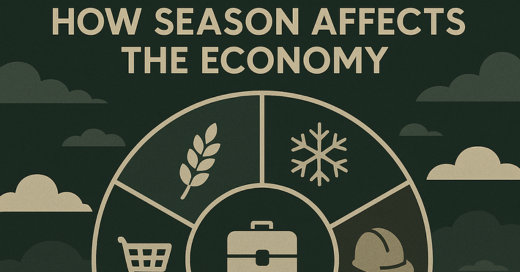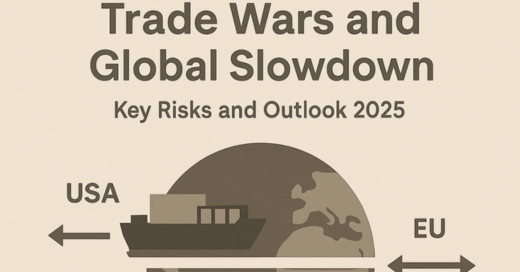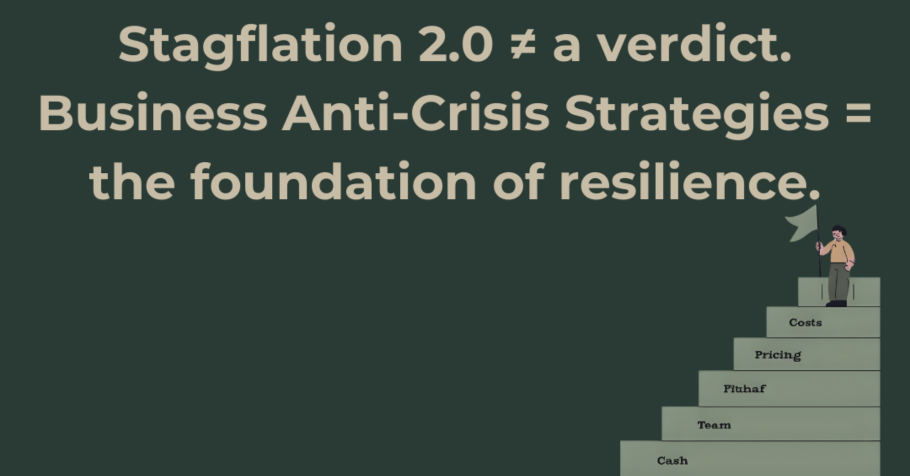Available in other languages:
Español | Français | Deutsch
Introduction
Seasonality in the economy refers to the recurring fluctuations in business activity that occur throughout the year. These changes are influenced by factors such as weather, holidays, vacations, school cycles, and other external factors. This phenomenon goes far beyond the change of seasons.
Understanding and implementing effective business seasonality management is crucial, as it supports planning, inventory control, workforce scheduling, and marketing efforts. Regardless of the industry, seasonality significantly impacts demand, supply, revenue, and even investment decisions.
In this article, we’ll explore how seasonality impacts various sectors. We’ll examine agriculture, retail, tourism, and other sectors. We’ll also identify common challenges and offer solutions for managing and adapting to business seasonality.
1. Agriculture and the Primary Sector: Clear Cases of Seasonality Management
Agriculture is one of the most season-dependent sectors. Crop yields are directly affected by weather patterns. For example, drought reduces wheat harvests, which in turn raises prices for bread and animal feed. On the other hand, excessive rain may cause oversupply and falling prices.
Employment and Investment Cycles
Seasonality also affects employment. In agricultural regions, labour demand spikes during planting and harvest seasons. This creates temporary jobs and lowers regional unemployment. However, job availability drops sharply during the off-season.
Investors must account for these cycles. Equipment purchases and storage upgrades often align with the agricultural calendar. Failing to account for seasonality in planning can lead to significant losses.
2. Retail and Consumer Behaviour: Holidays, Vacations, and Business Seasonality Management
Consumer activity shifts throughout the year. Retailers often earn 30–50% of their annual revenue during the winter holiday season, as demand for gifts, clothing, and electronics peaks during this time.
Seasonal Patterns in Summer
In the summer, demand for office wear typically decreases. Meanwhile, interest in leisure products continues to increase. These include sports goods, sun care, and travel gear.
Seasonal Promotions and Trends
Retailers rely on promotions to manage seasonality. Events like Black Friday and end-of-season sales boost sales and clear stock. For instance, clothing sales in November are strong due to holiday prep. In contrast, January sales rely heavily on discounts.
Recent data support these trends. In April 2025, retail sales rose by 0.1% in the eurozone and 0.7% in the EU. Compared to April 2024, the year-on-year growth reached 2.3% and 2.8%, respectively. Despite seasonal adjustments, non-food items—such as clothing and electronics—still exhibit strong seasonal fluctuations.
3. Tourism and Hospitality: Clear Examples of Business Seasonality Management
Tourism is highly seasonal. Ski resorts thrive in winter, while beach destinations see a boom in summer. As a result, hotel rates and transport bookings fluctuate significantly.
Infrastructure and Staffing Challenges
Despite seasonal demand, infrastructure must operate continuously throughout the year. Roads, water systems, and safety services need constant maintenance. This increases costs in off-peak months.
Staffing follows the same pattern. Hotels hire seasonal workers, including chefs, cleaners, and receptionists. Training and onboarding costs are significant. Alpine resorts depend on winter, while coastal areas rely on summer tourism.
Statistical Evidence of Seasonality in Tourism
In 2023, tourism reached its peak in Q3 among EU residents. August accounted for 12.5% of trips, while July saw 11.5%. August travel was 2.4 times higher than January. This underlines the need for strategic business seasonality management in this sector.
4. Construction and Industry: Managing Weather Constraints and Cyclical Production
The weather is a significant factor in construction delays. Rain, frost, and wind slow down operations and prevent concrete work. Many projects pause during the winter and resume in the spring.
Seasonal Scheduling and Equipment Investment
Construction schedules reflect these realities. Outdoor work happens in warmer months. Interior work is saved for colder periods. This planning helps manage budgets and materials.
Firms also invest in weather-resistant equipment. For example, heated machinery and insulated containers are essential in colder regions.
Seasonality in Industrial Output
Long-term data support this. From 2000 to 2019, EU-27 industrial output dropped by 16% in August, compared to the annual average. Textile production fell by 42%. Meanwhile, energy output peaked between November and February. These trends prove the value of business seasonality management in manufacturing.
5. Services and IT: Subtle but Crucial Business Seasonality Management
Services and IT are less weather-sensitive but still seasonal. In education, demand rises in autumn and spring. Summer brings lower activity.
Finance and Budget Cycles
Financial services peak at the end of the fiscal year. Activities include tax filing, audits, and closing reports. This creates pressure on accounting and legal firms.
Seasonality in IT Projects
In IT, demand follows budget cycles. Many firms initiate projects at year-end to utilise their remaining funds. As a result, spring can be quieter while waiting for new budgets.
Adapting to these trends is critical for success. Business seasonality management ensures smooth operations and better resource planning.
6. Challenges and Risks of Seasonality for Businesses
Seasonality leads to unstable income. Peak seasons may generate three times the revenue of off-peak months. As a result, forecasting ( We’ve covered forecasting in more detail here: Crisis Economic Forecasts: How to Identify Reliable Predictions ) and budgeting become difficult.
Staffing and Inventory Risks
Hiring seasonal workers is another challenge. Staff turnover and training costs reduce service quality.
Inventory control also becomes harder. Overstocking after peak seasons lowers profit. Understocking leads to lost sales. Poor planning can lead to significant cash flow problems.
Small businesses face the highest risk. Without substantial financial reserves, they may struggle during downturns. Business seasonality management helps avoid these pitfalls.
7. Strategies for Business Seasonality Management and Risk Mitigation
Diversification and Pricing Tactics
Businesses employ various strategies to manage seasonality. Diversifying product lines is one. For example, a shop may sell coats in winter and sports gear in summer.
Flexible pricing is also effective. Offering discounts in off-seasons and raising prices in peak times helps balance revenue.
Inventory and Crisis Planning
Modern analytics tools assist with forecasting. Accurate demand planning improves inventory control.
Building financial reserves is another safeguard. These reserves provide a cushion during periods of low income.
Marketing and Technology Tools
Seasonal marketing boosts engagement. Campaigns should align with seasonal needs—such as summer travel or winter holidays.
Technology plays a key role. Data tools and automation enable businesses to make more informed decisions about their seasonal operations.
Expanding Off-Season Opportunities
Businesses can also innovate during quiet months. For instance, ski resorts can offer summer hiking packages.
Consulting services help firms design personalised strategies. Business seasonality management becomes a long-term asset, not just a reaction.
Our expert guidance in business forecasting will help you identify and mitigate threats and transform external challenges into strategic opportunities. [Contact Us]
Conclusion
Seasonality presents both challenges and opportunities. Companies that master business seasonality management gain a decisive advantage. They plan better, optimise inventory, and invest more wisely.
Ignoring seasonality is a mistake. Embracing it leads to growth.





